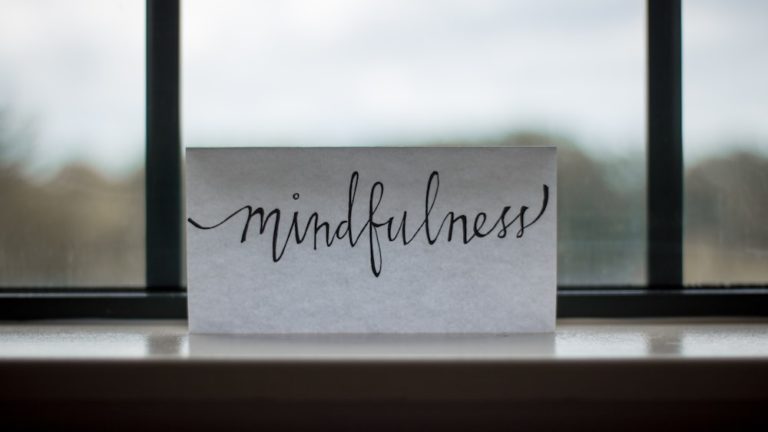12 Mindful Tips For Workplace Success: How To Practice Mindfulness In The Workplace
Ah, work. That four-letter word that can trigger a variety of emotions, from the giddy excitement of a new project to the stress-induced dread of Monday mornings. Working can often feel like teetering on a tightrope: one wrong move and you’re tumbling into a lion’s den of emails, coffee shortages, and the seeming quadrupling of tasks on your to-do list. The jest among employees, that there should be hammocks in the workplace instead of ergonomic chairs, is not without some ironic truth.
Here’s a crazy idea: what if navigating work didn’t have to be like walking a perilous tightrope? What if, with a little mindfulness, we could transform the workplace into a zen garden of productivity (with or without hammocks)? No, no – don’t check your browser. You’re not on a satire site. Hear me out!
This article offers 12 mindful tips for workplace success, helping you harness mindfulness – the art of living in the present moment without judgment. Whether you’re an employee or a company extraordinary, we’re about to change your perception of workplace mindfulness. So sit back, relax, grab a coffee (or herbal tea if you’re channeling your inner zen master), and let’s embark on this enlightening journey together.
Understanding Mindfulness
Mark Twain once quipped, “The more you explain it, the more I don’t understand it.” With that in mind, let’s demystify mindfulness to ensure we don’t fall into a similar conundrum.
What is Mindfulness?
You’ve probably heard the term “mindfulness” a fair bit. Maybe you only associate it with yogis or Buddhist monks, enlightened individuals who’ve built a life engrossed in meditation and contemplation. It’s time to debunk that stereotype, folks!
At its core, mindfulness is about staying fully in the present moment, experiencing life as it unfolds, without judgment or overreaction. Sounds simple, right? But catch yourself ruminating about past events or worrying about future ones and – boom – you’re not being mindful.
Mindfulness, in essence, is like having your very own spotlight that you can focus on anything you choose – a coworker’s report, the keyboard you are tapping away on, or even the stillness of your breath. Any place your spotlight lands, mindfulness allows you to fully inhabit that space and find joy in the sheer existence of the present moment.

Mindfulness is about staying fully in the present moment, experiencing life as it unfolds, without judgment or overreaction.
Importance of Mindfulness in the Workplace
The frenetic nature of modern work environments often leaves employees feeling like they’re caught in a caffeine-fueled cyclone. Deadlines, meetings, obligations – it’s no wonder work stress is becoming as common a diagnosis as the common cold.
When leveraged correctly, mindfulness techniques can help diffuse this stress. Research has proven that mindfulness at work leads to better focus, increased productivity, and improved relationships with colleagues. It’s like giving your brain a well-deserved spa break amidst the chaos of the workday. Thus, many companies started to integrate mindfulness practices, seeing it as a key strategy for fostering a balanced, healthy work environment.
Techniques to Practice Mindfulness at Work
Behold, the treasure trove of techniques. Here, we will guide you through actionable methods of practicing mindfulness, turning your workplace into Disneyland – but without the long queues and expensive hotdogs.
1. Being Consciously Present
Imagine being whisked away by a giant, majestic eagle every time your thoughts wander into the past or future (just play along). The eagle deposits you back squarely in the present moment, where the true magic of life happens. That’s the essence of being consciously present.
The art of being consciously present revolves around anchoring your focus to the task at hand or your current environment. It takes a little bit of practice – after all, old habits die hard – but with time, you’ll become adept at it.
And, the benefits? Increased productivity, enhanced focus and a brighter, more awakened mind. Suddenly, that giant, majestic eagle isn’t such a fantastical metaphor after all.
2. Short Mindful Exercises
Short mindful exercises are like mini stress-busters, infusing pockets of calm into your workday. You know, something you can do while waiting for the coffee to brew, or when the printer takes eons to print out your report.
Take deep breathing, for instance. Focusing your attention on the sensation of your breath entering and leaving your body can help transport you into the present moment.

Or the classic Buddha advised – ‘walking meditation’. As you move from one place to another at work, focus on the feeling of your feet touching the ground, the rhythm of your stepping, each breath. Before you know it, you’re experiencing mindfulness.
3. Single-Tasking
Remember the tortoise and hare fable from your childhood – slow and steady wins the race? It’s time for us to take a leaf out of Mr. Tortoise’s book. We live in an age where multitasking is seen as a coveted skill. But it turns out, the tortoise was onto something.
Single-tasking is just being mentally present and focusing on one task at a time. It’s bringing the spotlight of your attention, to be fully with what you’re doing without distraction.
Think of it like savoring a delicious cupcake – you wouldn’t wolf it down whole, would you? You take the time to taste the frosting, feel the texture, appreciate the flavor. Apply the same principle to your work tasks.
Benefits of single-tasking are profound, including improved productivity and reduced stress levels. So, let’s bring single-tasking back into vogue, and help our minds focus on ‘the delicious cupcake’ that is each task at hand.
4. Using Mindful Reminders
Hey folks, guess what? Your mind is like a chaotic parliament meeting, with thoughts yammering away in all directions. And that’s where mindful reminders come into play! Imagine a stern speaker, gavel in hand, announcing ‘order, order!’. That’s essentially what a mindful reminder does.
These reminders can be anything from a vibrantly colored sticky note on your monitor to a phone alarm with an inspiring note. Scheduled and strategically placed around, these reminders break the monotonous buzz of our busy working hours.
5. Slowing Down to Speed Up
We’re all running a race these days, right? We’re like hamsters on a wheel, sprinting to get those deadlines in, so fast that we could fly off into space at any moment! But here’s the secret kicker, my fellow fast furry friends: Slowing down can actually help us speed up.
By taking conscious breaths, allowing for pauses, and mindfully experiencing each task at hand, we prevent mindless mistakes that could lead us astray. It’s just like taking time to tie your shoelaces in a marathon: it might feel counterintuitive, but it’s all about the long haul.
And remember, as opposed to our hamster, our wheel isn’t just spinning in a cage, but navigating through a vibrant professional landscape, worthy of our attention.

6. Making Stress Your Friend
Like standing too close to a painting, sometimes we miss the true depth of the masterpiece that is stress. Yes, you heard me right – stress can be your friend! Instead of running away like a startled kitten from stress, let’s consider approaching it like a curious cat inspecting a new toy.
Stress-free environments are pretty much as real as unicorns; they’re fabulous and mythical. The trick is to shift our perspective. Stress, like any challenge, is an opportunity for growth. When you feel the heat, focus on your breath, center yourself, and leverage stress as a powerful motivator.
After all, diamonds are made under pressure, right? And you, my friend, are a rare gem in the making.
7. Cultivating Gratitude
Work can sometimes feel like a dark tunnel, full of endless tasks and deadlines, making us forget the light at the end. You might wonder, “Where’s the light?” The answer is quite simple: cultivate gratitude.
Being thankful for the opportunities, the conversations, even the hurdles, can make work more than a monotonous grind. The benefits of gratitude include an improved outlook and increased resilience. It’s like turning your work tunnel into a prism – suddenly, the same input results in a colorful array of experiences.
Take a moment each day to reflect on and appreciate one thing you’re grateful for at work. You’ll be amazed how the tunnel brightens.
Cultivating gratitude can turn work from a monotonous grind into a colorful array of experiences, leading to an improved outlook and increased resilience.
8. Cultivating Humility
If gratitude is the light, humility is the space within which that light can shine, and you are your own planetarium. But cultivating humility isn’t always easy. You may be wondering, “How do I, a superstar in my field, remain humble without dimming my own light?”
Humility is not about self-deprecation. It’s about acknowledging we are all part of a larger constellation of efforts, ideas and solutions, all of which contribute to the finished masterpiece. Recognize your own value, but remember, every star in your galaxy is crucial for harmony and balance.
Embracing a humble attitude can lead to richer ideas, warmer connections, and a greater appreciation of your unique working experience.
9. Accepting What You Can’t Change
Newsflash: You are not a magician. Shocking, right? Despite our best illusionist performances, there are things at work that we simply can’t change. Accepting this fact is not a pacifying surrender but an empowering choice.

Instead of spending precious energy shifting immovable moments, channel that energy into your reaction towards them – like a boxer ducking and weaving against the blows. Acceptance doesn’t mean complacency, but rather a mindful selection of the battles you choose to fight.
10. Adopting a Growth Mindset
What separates an intimidating mountain from an exhilarating trail? It all comes down whether you approach it with a fixed mindset or a growth mindset.
A growth mindset acts like the ultimate hiking gear, transforming your professional journey into an adventure of countless learning opportunities. It prompts us to view every stumble as a stepping stone, every failure as a chance to grow.
Remember, every mountain summit is reached by moving upward, one step at a time. Similarly, professional progress is a climb, and every challenge a stepping stone.
Implementing Mindfulness in the Workplace
Cascading down our list like a refreshing waterfall, these mindfulness tips are only as good as their implementation. As you merge them into your everyday work, remember this motto: “Inch by inch, everything’s a cinch”. Begin with small changes and let the magic of mindfulness transform your workplace experience into a balanced, vivacious symphony.
11. Normalizing Asking for Help
You know how cats will start wildly sprinting around for no reason? Sometimes, the human workplace version of that is pretending we know what we’re doing when we’re as lost as a cat in an Ikea. It’s high time we start normalizing asking for help at the workplace – acting like lone rangers is only going to get us so far.
Embrace the fact that you’re human and calls for assistance don’t mean you’re incompetent! Like a bee sends out an SOS pheromone when it’s in danger, make it your mission to hone your buoyancy, reach out to your colleagues when in need, and banish the idea that asking for help is a showcase of weakness.
12. Prioritizing Connections
No person is an island, especially not in the office. The worker bees of the best functioning hives are the ones who work in harmony, and yours should be no different. Leave your workstation, trot out and start prioritizing connections at your workplace.
Just like the jungle, office environments can be daunting, but remember, the strength of the pack is the wolf, and the strength of the wolf is the pack. Spending time to establish strong relationships not only increases your happiness at work, but it can also act as a source of strength and support when the workloads get heavy.

Prioritizing connections and establishing strong relationships in the workplace not only increases happiness, but also acts as a source of strength and support during heavy workloads.
Your Burning Mindfulness FAQs Addressed
1. How can mindfulness improve my work performance?
Mindfulness and work performance are linked like salt and pepper – a key seasoning to your professional ensemble. By practicing mindfulness, you’re able to keep your thoughts focused and your emotions in check, leading to better decision-making and creativity. This all accumulates to be a significant improvement in your overall work performance.
2. Can mindfulness help in managing work stress?
Managing work stress is one realm where mindfulness flourishes as an unbeatable gladiator. Mindfulness exercises help you stay present, which can halt rumination over past blunders or future fears – that prolific source of stress and anxiety.
3. How to stay mindful during a busy workday?
During a busy workday, staying mindful might seem as far-fetched as expecting a unicorn to stride into your office. Yet, it’s possible! Engage in quick mindfulness exercises, like brief meditations or controlled breathing, which can be easily incorporated into your schedule, keeping your day filled with calmer waters, instead of stormy seas of tension.
4. What are some quick mindfulness exercises for the workplace?
There are quite a bunch of mindfulness exercises that can be squeezed into your hectic work schedule. These include:
- Deep breathing: Just take 5 minutes and focus on your breath, inhaling and exhaling slowly.
- Mindful observation: Pick any object, say a pen, and observe it closely for a few minutes.
- Body scan: Sit comfortably and focus on different parts of your body, from the toes to the head.
Conclusion
We’ve danced our way through the importance of mindfulness, walked you through its numerous techniques, and even doused your burning questions. When the waves of work start roiling, let mindfulness be your lighthouse, guiding you to calmer shores.
Remember the enchanted world of animations where everything seems possible? Your workplace should be no different. Break free from the conventional shackles, adopt and embed these mindfulness techniques into your daily work routine, and you’ll find your professional life becoming more akin to the best version of your favorite fairytale.
Mindfulness is not compartmentalized for monks alone; it is a simple tool that every one of us can wield to weave a better tapestry of our lives. For those of you gunning for the phrase “happily ever after” at your workplace, these mindfulness tips could very well be the fairy godmother’s wand you’ve been searching for.
With practice, a little bit of laughter, and a healthy dosage of mindfulness, you’re not just stepping up the corporate ladder but are also working on the best version of yourself. So get ready, prepare your cape, because it’s time for your professional life to take the mindful flight!
I wish you the best! Fabian.
Share with your Friends:






